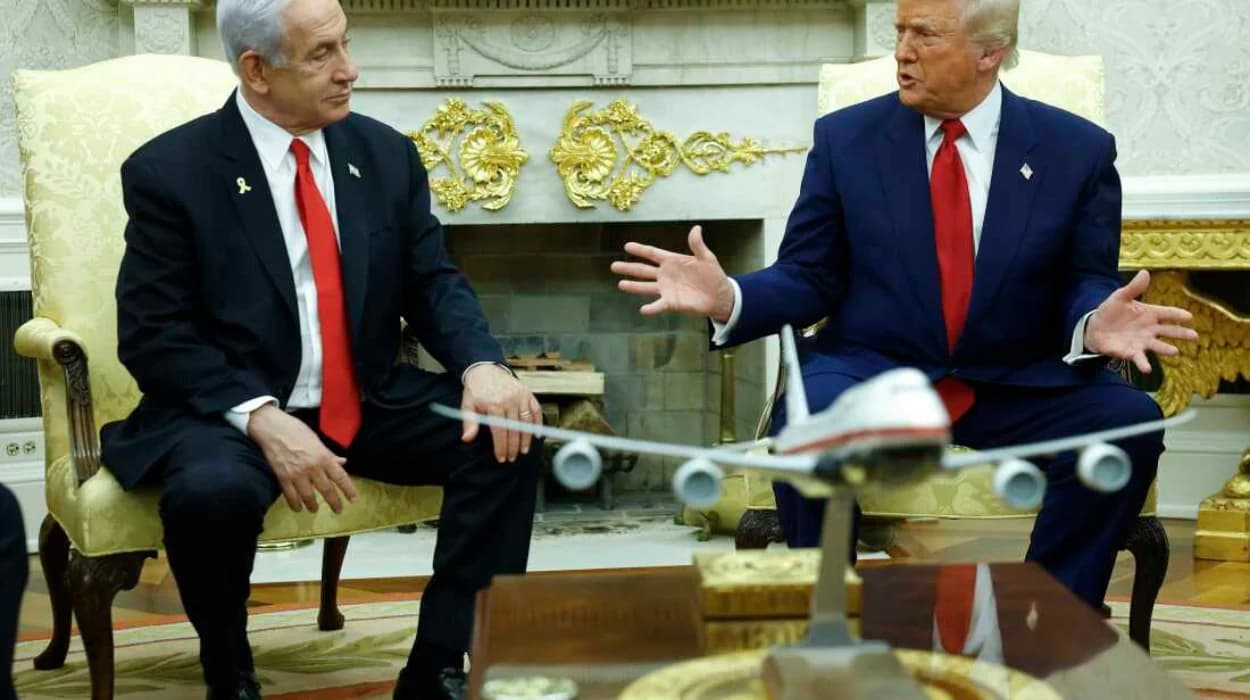Israeli Prime Minister Benjamin Netanyahu’s recent visit to
Washington concluded with mixed messages on the Gaza ceasefire and US-Israel
relations, amid ongoing Middle East tensions and international diplomatic
efforts. While talks with President Donald Trump aimed to advance peace
negotiations, divergent public statements and geopolitical complexities have
left outcomes uncertain.
Purpose of Netanyahu’s Washington Visit
Israeli Prime Minister Benjamin Netanyahu travelled to
Washington in early July 2025 to engage in high-level discussions with US
President Donald Trump, focusing primarily on the Gaza ceasefire talks and
broader Middle East security issues. As reported by Democracy Now! on July 9,
2025, the meeting marked their second consecutive day of talks aimed at
addressing the humanitarian crisis in Gaza and stabilising the region amid
ongoing conflict. The visit was also set against the backdrop of
escalating tensions in the Middle East, including recent military actions and
diplomatic challenges.
Key Outcomes of the Talks
According to Democracy Now!, the talks ended with conflicting
signals. While both leaders expressed a commitment to ceasefire efforts,
there was no definitive agreement publicly announced. Netanyahu’s delegation
conveyed cautious optimism about progress, but the lack of a clear joint
statement suggested unresolved differences. President Trump’s remarks during
the visit highlighted a complex stance on regional actors, notably Russia and
Iran, which influenced the dynamics of the discussions.
President Trump Frames the Situation
President Donald Trump, speaking during the visit, made
several notable comments. He sharply criticised Russian President Vladimir
Putin, describing him as “very nice all the time, but it turns out to be
meaningless,” signalling a tougher US posture on Russia’s role in the region. Trump
also announced a reversal in US policy by pledging additional weapons shipments
to Ukraine, after a recent Pentagon pause, reflecting shifting US strategic
priorities that indirectly impact Middle East diplomacy.
Broader Regional Security Concerns
The visit occurred amid heightened regional instability.
Ukraine’s Air Force reported a record aerial attack by Russia, involving 741
drones and missiles, prompting Poland to activate air defences. This
escalation in Eastern Europe adds complexity to US foreign policy, as resources
and diplomatic attention are divided. Additionally, the ongoing Gaza conflict
and the humanitarian crisis, including mass displacement and food shortages,
remain urgent issues.
Geo News coverage on July 9, 2025, underscored US military
readiness and global security measures, including embassy shutdowns and travel
advisories in response to potential conflict spillovers from the Middle East. These
developments frame the strategic context in which Netanyahu’s visit took place.
Humanitarian Concerns Discussed
Democracy Now! highlighted the severe humanitarian
conditions in Gaza, with Palestinians facing starvation and displacement as a
result of the conflict. The ceasefire talks aimed to alleviate these
conditions, but the absence of a firm agreement raised concerns about the
continuation of suffering. The international community, including medical and
public health organisations, remains engaged in addressing the crisis, as
reflected in parallel global health efforts such as the approval of new malaria
treatments for children in Africa.
Media and Experts React to the Visit
Media reports and expert analyses have emphasised the uncertainty
and mixed messages emerging from the Washington talks. The lack of a
clear resolution or joint communiqué has led to speculation about the
durability of any ceasefire and the future of US-Israel relations. As noted by
Democracy Now!, the visit’s outcomes were overshadowed by broader geopolitical
shifts, including US policy reversals on arms shipments and criticisms of
Russia.
Implications for Future US-Israel Relations
The visit highlighted the complexity of US-Israel relations
in a volatile geopolitical environment. While the Trump administration
reaffirmed its support for Israel, the conflicting signals from the talks
suggest challenges ahead in coordinating policy on Gaza and regional security.
The interplay between US domestic politics, international alliances, and Middle
East dynamics will continue to shape this relationship.
What Else Is Happening in the Region and Globally?
In addition to the Middle East focus, other global issues
intersect with the visit’s context. For instance, severe floods in New Mexico
and Texas have caused significant casualties and humanitarian responses in the
US. Meanwhile, vaccine policy controversies and public health lawsuits in
the US reflect domestic challenges that may influence government priorities. These
broader events form part of the complex backdrop against which Netanyahu’s
visit unfolded.
How Does This Visit Fit Into the Larger Picture of Middle East Peace Efforts?
Netanyahu’s Washington trip is one episode in the ongoing,
often fraught, efforts to achieve peace and stability in the Middle East. The
conflicting signals from the talks underscore the difficulty of reconciling
diverse interests and managing external influences such as Russia and Iran. The
humanitarian urgency in Gaza adds pressure for swift and effective diplomatic
solutions.
What Lies Ahead After Netanyahu’s Washington Visit?
The visit concluded without a definitive breakthrough,
leaving many questions unanswered. As reported by Democracy Now! and Geo News,
the mixed messages from Netanyahu and Trump reflect the intricate and evolving
nature of Middle East diplomacy. The international community, regional
actors, and the US administration face the challenge of translating dialogue
into concrete actions that can halt violence and address humanitarian needs.
